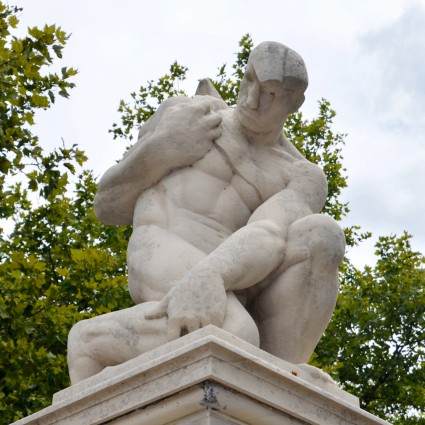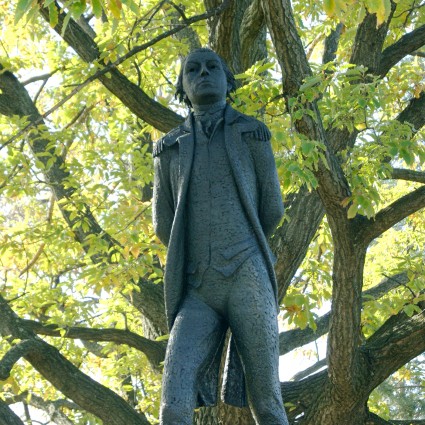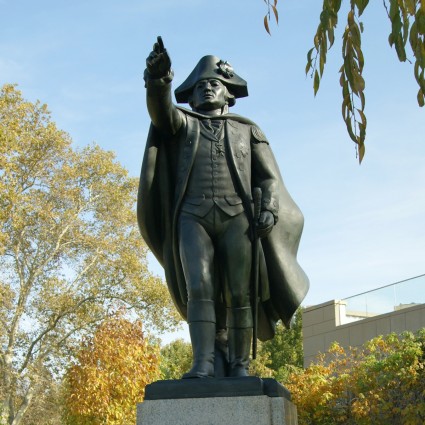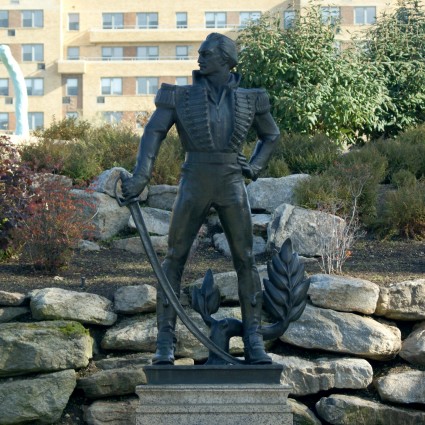At A Glance
Commissioned as part of the William M. Reilly Memorial
General Richard Montgomery served with the British army in America during the French and Indian War and later served as a general for the Continental Army during the American Revolutionary War
Montgomery died in the field while invading Canada in 1775
Artist J. Wallace Kelly completed the first monument for the William M. Reilly Memorial
Philadelphian J. Wallace Kelly, who was already responsible for a number of other public sculptures in the city, completed the first monument for the William M. Reilly Memorial. General Richard Montgomery’s career was both spectacular and short.
Born in Ireland, Montgomery served with the British army in America during the French and Indian War. In 1772 he emigrated to the American colonies, and when the Revolutionary War broke out he was commissioned a brigadier general. In the Canadian campaign of 1775 he quickly captured the cities of St. John’s and Montreal. He then joined forces with Benedict Arnold to attack Quebec, and in that unsuccessful assault Arnold was wounded and Montgomery died in the field.
William M. Reilly Memorial
In his will of 1890, General William M. Reilly of the Pennsylvania National Guard established a trust fund for the purpose of creating monuments to American Revolutionary War heroes. The earnings were to accumulate until the fund became large enough for the memorial to be realized. In 1938, when the fund reached the necessary level, the trustees set the project in motion, and four bronze statues were installed by 1947. Although Reilly had requested a site near Independence Hall, the larger-than-life figures were placed instead on the terrace northwest of the Art Museum. C. Louis Borie, Jr., one of the architects of the museum itself, designed the granite bases.
As specified in the will, these first four sculptures commemorated Montgomery, Pulaski, von Steuben, and Lafayette, volunteers from other lands who “threw themselves into the cause of emancipating the colonies from the yoke of British tyranny.” In addition to honoring their achievements, General Reilly wrote, the memorial would express “appreciation and gratitude to the lands which gave these liberty-loving men their birth.”
By the terms of the will, funds remaining after the erection of the four original monuments were to be applied to other statues of Revolutionary heroes. Accordingly the trustees commissioned bronze figures of John Paul Jones and Nathanael Greene, which were installed in 1957 and 1961, respectively. The six sculptures are arranged in two facing rows.
Adapted from Public Art in Philadelphia by Penny Balkin Bach (Temple University Press, Philadelphia, 1992).
RESOURCES:



